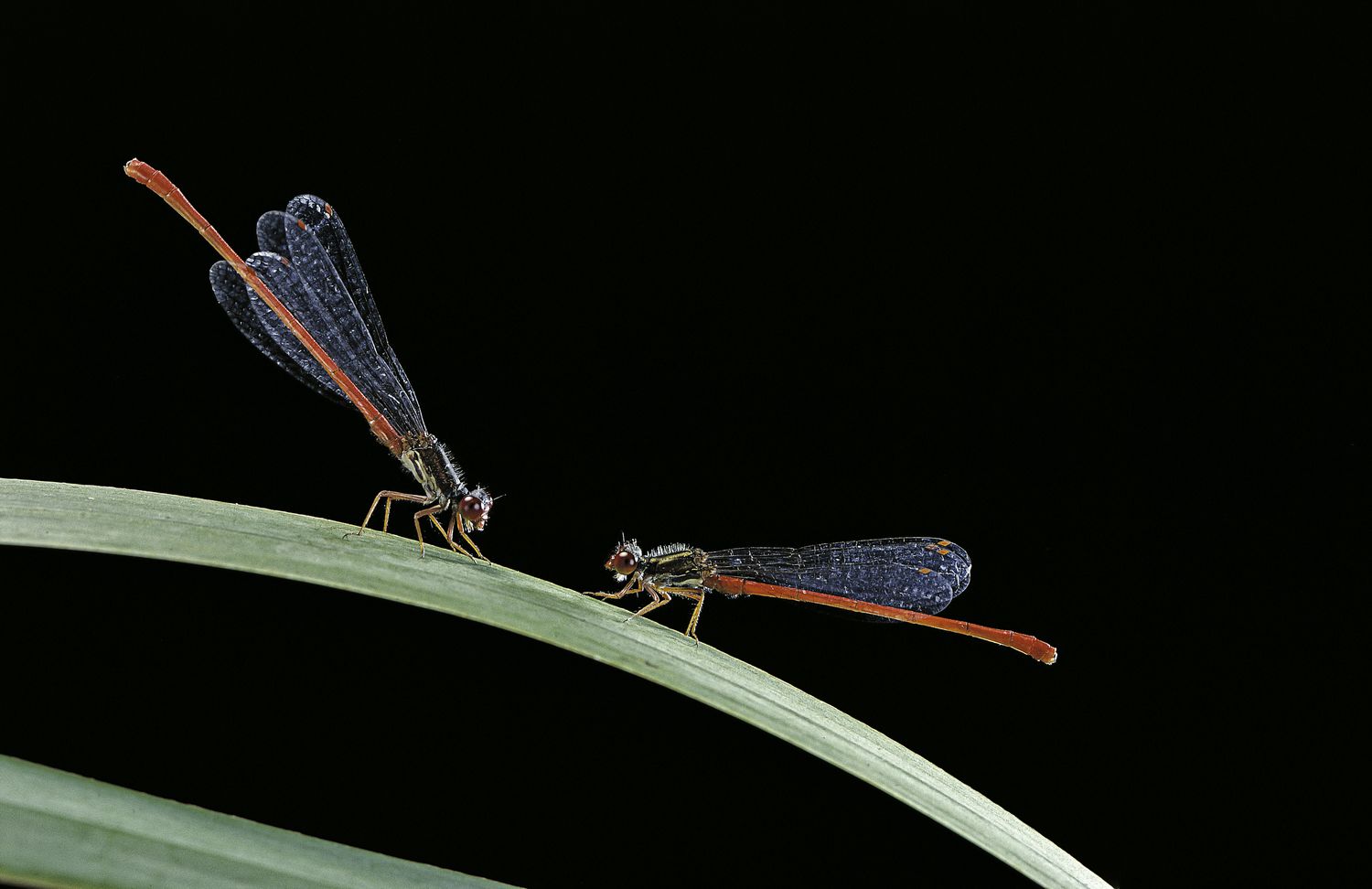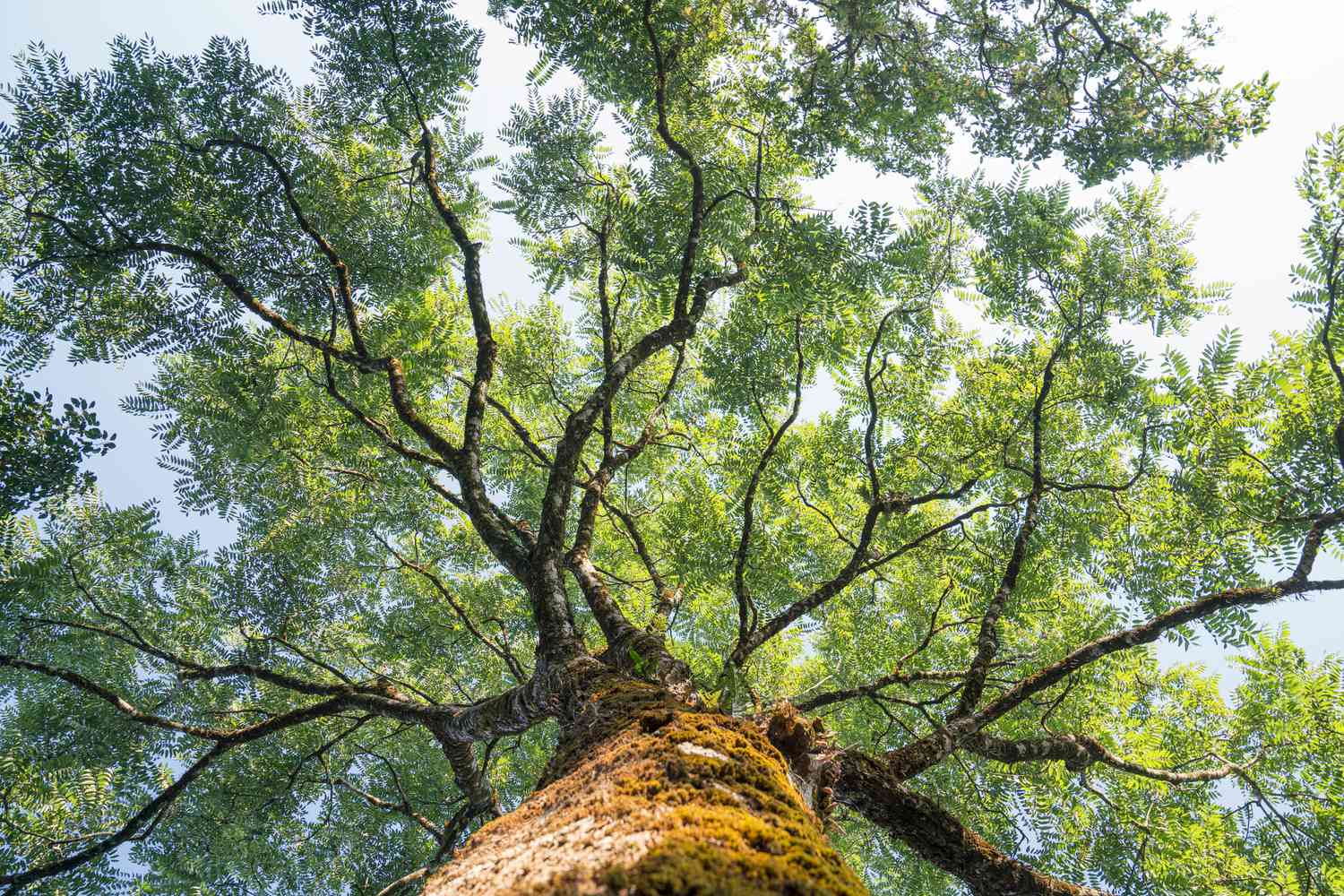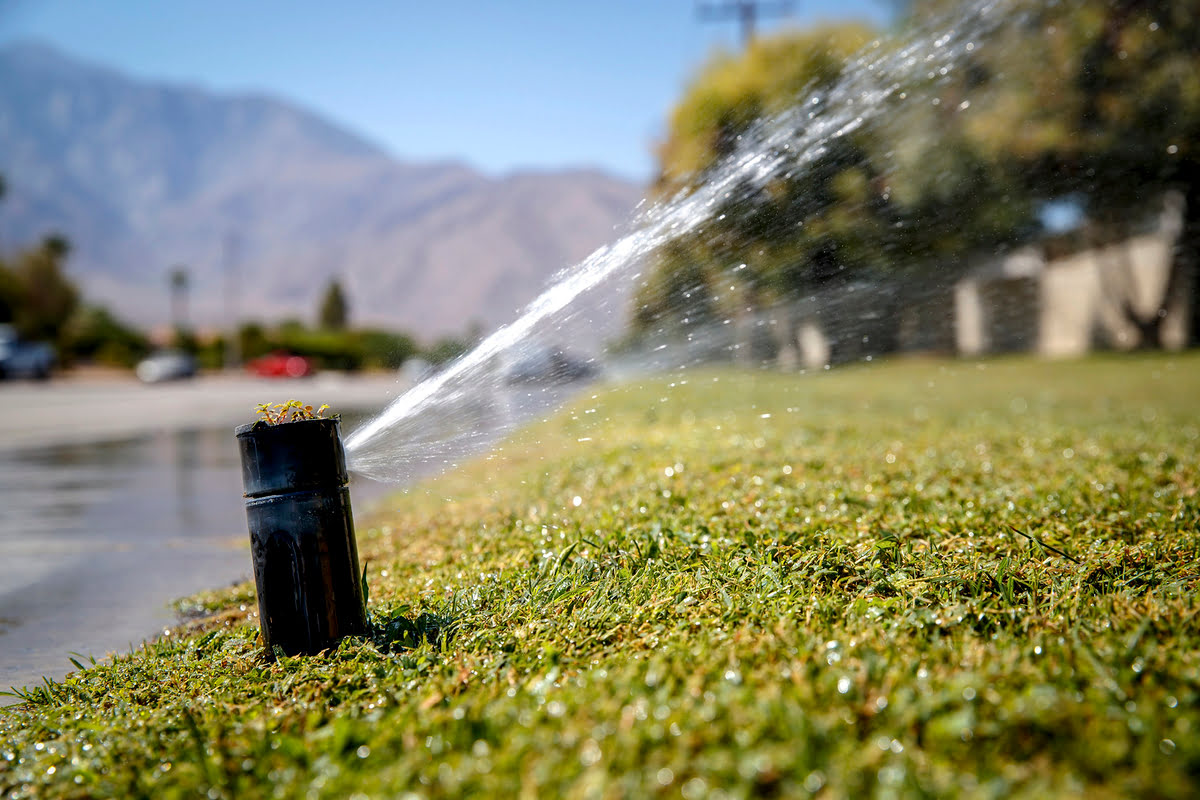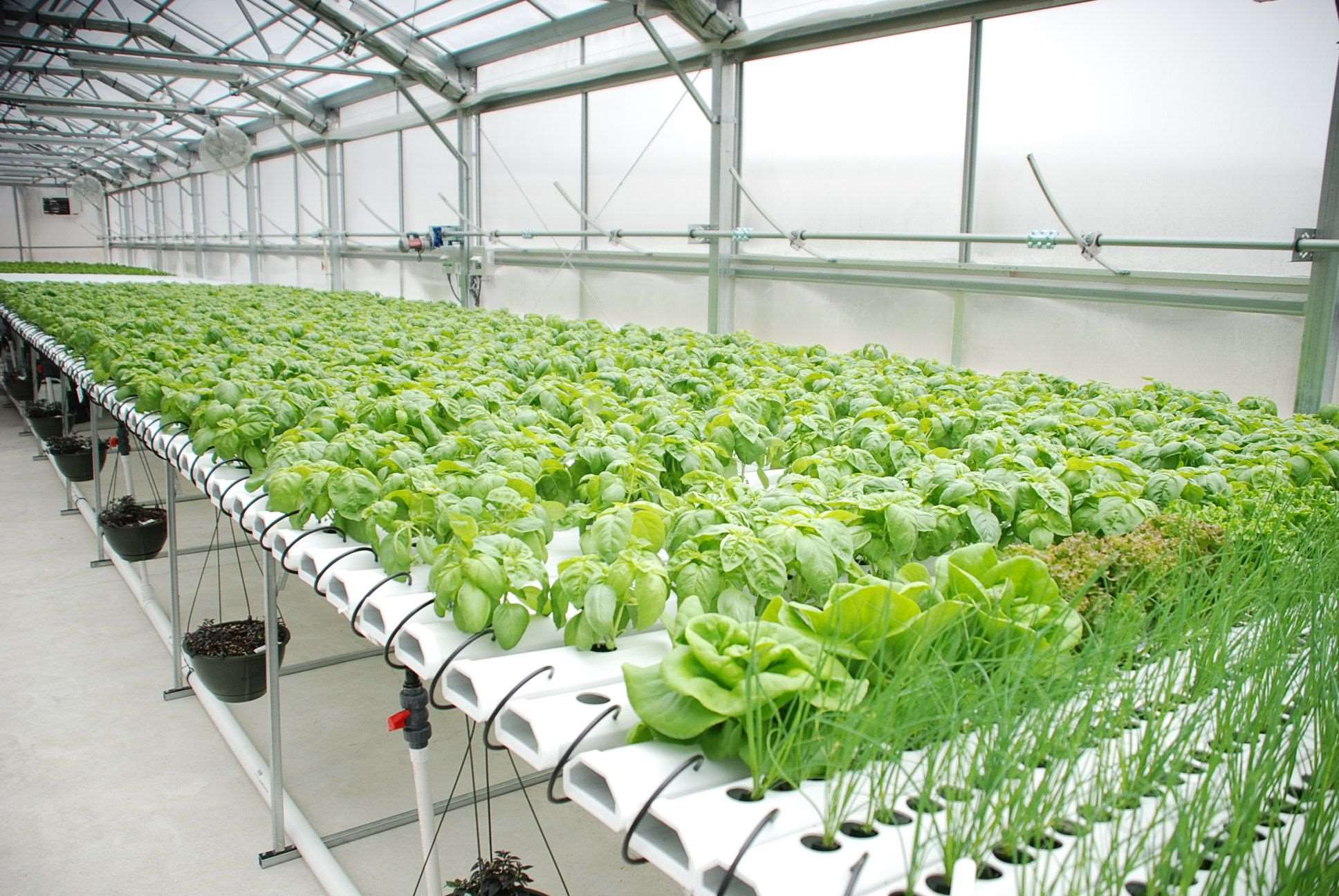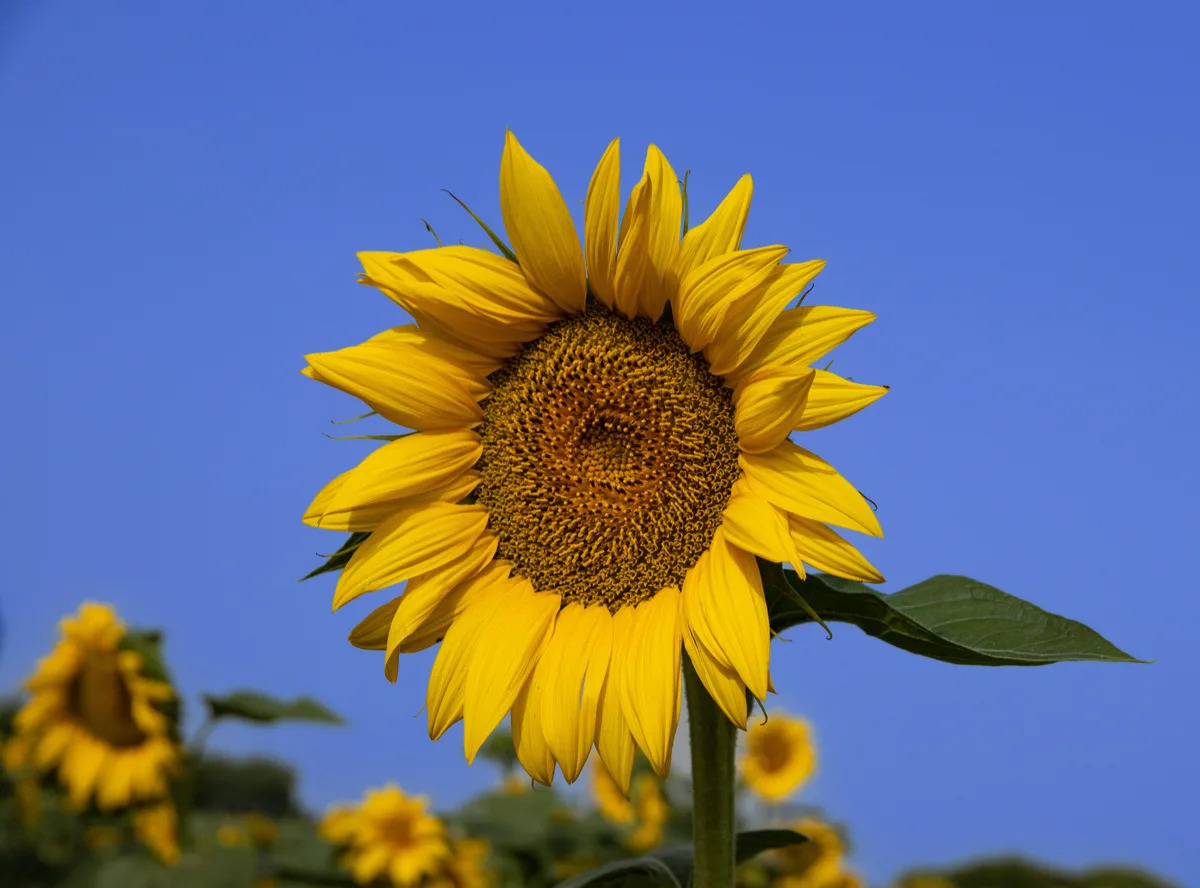Home>Types of Gardening>Ornamental Gardening>Which State Grows The Most Sunflowers
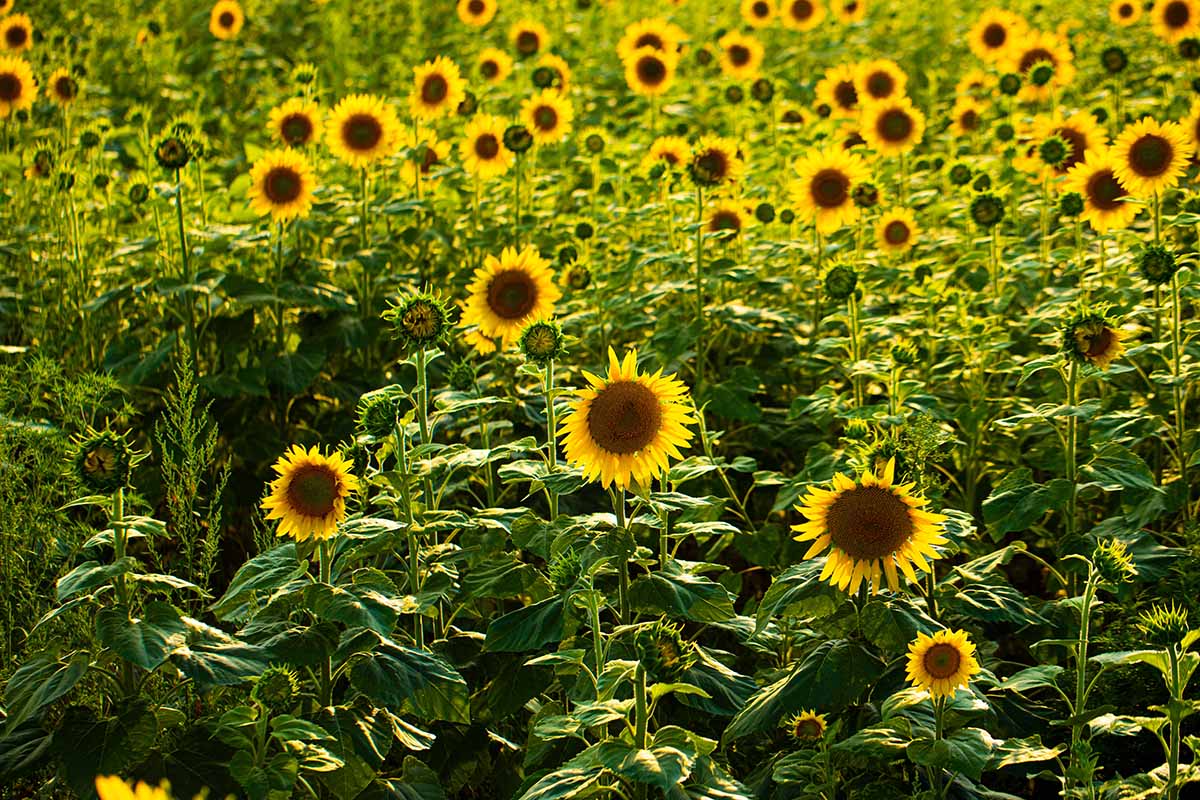

Ornamental Gardening
Which State Grows The Most Sunflowers
Modified: January 22, 2024
Discover which state leads in sunflower production and learn about the art of ornamental gardening with sunflowers. Find tips, tricks, and inspiration to cultivate your own beautiful sunflower garden.
(Many of the links in this article redirect to a specific reviewed product. Your purchase of these products through affiliate links helps to generate commission for Chicagolandgardening.com, at no extra cost. Learn more)
Table of Contents
Introduction
Welcome to the exciting world of gardening! If you have a passion for beautiful flowers and want to add a touch of elegance to your outdoor space, ornamental gardening is the perfect hobby for you. Ornamental gardening focuses on cultivating and nurturing plants for their aesthetic value and decorative appeal, creating stunning displays that brighten up any garden or landscape.
In this article, we will explore the fascinating world of ornamental gardening and provide insights into how you can create a vibrant and visually appealing garden. We will discuss various aspects of ornamental gardening, including plant selection, soil preparation, planting techniques, and ongoing maintenance.
Ornamental gardening allows you to unleash your creativity and showcase your unique sense of style. Whether you prefer a traditional English garden, a contemporary minimalist design, or a colorful wildflower meadow, there are endless possibilities to express your personal taste and create a haven of beauty in your backyard.
One of the key benefits of ornamental gardening is the wide range of plants you can choose from. From eye-catching flowers to striking foliage plants and elegant shrubs, there are countless options to suit every preference and climatic condition. Many ornamental plants also attract beneficial insects and pollinators, contributing to a thriving ecosystem in your garden.
Throughout this article, we will provide valuable tips and expert advice to help you create a truly outstanding ornamental garden. Whether you are a beginner looking to start your first garden project or an experienced gardener seeking fresh inspiration, this comprehensive guide will equip you with the knowledge and tools necessary to achieve stunning results.
So, let’s delve into the world of ornamental gardening and discover the joy of transforming your outdoor space into a paradise of color, fragrance, and beauty!
Methodology
When it comes to ornamental gardening, having a well-defined methodology is crucial for achieving successful results. A systematic approach will help you plan and execute your gardening tasks effectively, ensuring that each step contributes to the overall beauty and health of your garden.
Here are some key elements that define a solid methodology for ornamental gardening:
- Assessing the Site: Before starting any gardening project, it is essential to assess your site’s conditions. Consider factors such as sunlight exposure, soil type, drainage, and microclimates. This information will guide your plant selection and help you create the ideal growing conditions for your ornamental plants.
- Designing and Planning: Developing a garden design and layout is an integral part of the methodology. Consider the overall theme or style you want to achieve, as well as the different areas and focal points in your garden. Create a planting plan that provides a balance of colors, textures, and heights for a visually appealing landscape.
- Choosing the Right Plants: Selecting suitable plants is crucial for the success of any ornamental garden. Consider the climate, soil conditions, and maintenance requirements of each plant. Choose a mix of annuals, perennials, shrubs, and trees to provide year-round interest and ensure a dynamic and evolving garden.
- Preparing the Soil: The foundation of any healthy garden is fertile soil. Prepare the soil by removing weeds, loosening compacted areas, and adding organic matter to improve its structure and fertility. Conduct a soil test to determine any nutrient deficiencies and make appropriate amendments.
- Planting Techniques: Proper planting techniques are essential for the establishment and growth of ornamental plants. Dig appropriate-sized holes, loosen the roots, and position the plants at the correct depth. Backfill with soil, firm gently, and water thoroughly to ensure good contact between the roots and surrounding soil.
- Watering and Irrigation: Adequate moisture is critical for the health of ornamental plants. Develop a watering schedule based on the needs of different plant species. Consider installing an efficient irrigation system to provide consistent and targeted moisture to your garden, particularly during dry periods.
- Mulching and Weed Control: Applying a layer of organic mulch around your plants helps conserve moisture, suppresses weeds, and maintains a more stable soil temperature. Regularly inspect your garden for weeds and promptly remove them to prevent competition for resources.
- Pruning and Maintenance: Pruning promotes healthy growth, enhances plant shape, and controls size. Regularly inspect and maintain your garden by removing spent flowers, deadheading, and cutting back overgrown or damaged foliage. Stay vigilant for pest and disease issues and take appropriate action.
- Fertilization and Nutrient Management: Ornamental plants often benefit from regular feeding to provide essential nutrients. Use slow-release fertilizers or organic amendments to nourish your plants without over-fertilizing, which can lead to excessive growth or nutrient imbalances.
- Continuous Learning: Lastly, a successful ornamental gardener is always eager to learn and adapt. Stay updated on the latest gardening techniques, attend workshops, and join gardening communities to exchange knowledge and experiences with fellow enthusiasts.
By following a well-defined methodology, you can establish and maintain a vibrant and visually appealing ornamental garden. Each step contributes to the overall health and beauty of your garden, ensuring that you create a stunning space to enjoy and share with others.
Sunflower Production in State A
State A, known for its fertile soil and favorable climate, has become a leading producer of sunflowers in the region. The abundance of sunshine and adequate rainfall in this state create ideal conditions for sunflower cultivation, resulting in high yields and excellent quality flowers.
Local farmers in State A have embraced sunflower production due to the increasing demand for sunflower seeds and oil in both domestic and international markets. The versatility of sunflowers as a crop, along with their attractive blooms, has made them a profitable choice for many agricultural enthusiasts.
Farmers in State A follow a well-established process when it comes to sunflower production. It starts with careful land preparation, including plowing and tilling the soil to create a fine seedbed. This helps ensure optimal seed germination and plant growth.
Once the soil is prepared, farmers select high-quality sunflower seeds that are adapted to the local climate conditions. Sunflower varieties that have proven to perform well in State A are chosen, taking into account factors such as disease resistance, growth habits, and mature plant height.
Seeds are then sown at the appropriate time, usually in the spring, when the soil temperature is ideal for germination. Farmers use specialized machinery to evenly distribute the seeds across the fields, ensuring proper spacing and depth for optimal plant development.
Careful irrigation management is crucial throughout the sunflower growing season. State A’s farmers employ various irrigation techniques, such as drip irrigation or overhead sprinklers, to provide adequate moisture to the sunflower plants without causing water stress or excessive soil saturation.
Weed control is another important aspect of sunflower production in State A. Farmers employ various methods, including mechanical cultivation and the use of herbicides, to suppress weeds and minimize competition for resources, allowing sunflowers to thrive.
As the sunflower plants grow, farmers monitor their health and apply appropriate fertilizers to ensure optimal nutrition. Nutrient deficiencies are addressed promptly through foliar sprays or soil amendments, ensuring that the plants have the necessary nutrients for robust growth and flower production.
Harvesting usually takes place in late summer or early fall, when sunflower heads have matured and the seeds are plump and dry. Farmers use specialized harvesting equipment to efficiently remove the sunflower heads from the plants. The harvested heads are then dried further to reduce moisture content and prepare them for seed extraction.
The extracted sunflower seeds can be used for various purposes, such as oil production, bird feed, or even human consumption. State A’s sunflower farmers have access to local processing facilities that handle the extraction of sunflower oil to meet the increasing demand for this widely used cooking oil.
Overall, State A’s sunflower production industry continues to flourish, driven by the dedication and expertise of local farmers. The combination of favorable climatic conditions, careful cultivation practices, and efficient post-harvest processes has positioned State A as a major contributor to the sunflower market, both locally and beyond.
Sunflower Production in State B
State B has emerged as a significant player in sunflower production, thanks to its unique geographical advantages and the dedication of local farmers. With its fertile soil, favorable growing conditions, and innovative agricultural practices, State B has established itself as a key contributor to the sunflower industry.
The climate in State B is characterized by warm summers and moderate rainfall, providing an ideal environment for sunflower cultivation. The rich, well-drained soils found in this state contribute to high yields and the production of high-quality sunflower crops.
Local farmers in State B have adopted modern farming techniques and optimized their farming practices to maximize sunflower production. They have implemented precision agriculture methods, utilizing technology to monitor soil moisture levels, nutrient requirements, and plant health.
Before sowing sunflower seeds, farmers in State B carefully prepare the soil through plowing and incorporating organic matter to enhance fertility. This ensures that the soil is prime for seed germination and provides adequate support for the growing plants.
The selection of sunflower varieties is crucial to successful production in State B. Farmers carefully choose hybrid varieties that are resistant to common diseases and pests prevalent in the region. These varieties are specifically bred to thrive in the local climate and exhibit traits such as improved yield potential and adaptability to varying soil conditions.
Sunflower planting in State B typically takes place in the spring when soil temperatures have warmed sufficiently. Farmers utilize advanced planting techniques, including precision seeders, to ensure even spacing and optimal plant density. This helps maximize sunlight exposure, air circulation, and ultimately, seed production.
To maintain the health and productivity of sunflower crops, farmers in State B implement a comprehensive pest and disease management strategy. Integrated pest management practices are employed, which focus on employing natural predators, biological controls, and judicious use of pesticides when necessary.
During the growing season, irrigation plays a vital role in sunflower production in State B. Farmers utilize efficient irrigation systems that deliver water precisely to the root zone, minimizing waste and ensuring adequate moisture levels throughout the crop’s development. This efficient water management helps in maintaining healthy plant growth and optimizing yield potential.
As the sunflower plants reach maturity, farmers monitor the crop closely for signs that the seeds are ready for harvesting. This is determined by changes in the color of the heads from green to brown or yellow and the drying down of the plant. Mechanized harvesting equipment is commonly used in State B to efficiently remove the mature sunflower heads from the field.
Once harvested, the sunflower heads are further processed to extract the seeds. In State B, you’ll find facilities equipped with the latest technology for seed cleaning and drying, ensuring that only high-quality sunflower seeds make it to market. These seeds can be used in a wide range of applications, including cooking oil production, bird feed, and even as an ingredient in various food products.
State B’s commitment to sustainable and efficient agriculture practices, combined with its favorable growing conditions, contributes to its success in sunflower production. Through a harmonious balance of technology, experience, and expertise, the farms of State B continue to thrive, making a significant contribution to the sunflower industry nationally and internationally.
Sunflower Production in State C
State C has emerged as a prominent hub for sunflower production, renowned for its unique agricultural practices and favorable growing conditions. With its fertile soil, ample sunshine, and meticulous farming techniques, State C has positioned itself as a key player in the sunflower industry.
The climate in State C is characterized by hot summers and moderate rainfall, which provide an ideal environment for sunflower cultivation. The well-drained soils found in this state, combined with careful irrigation management, contribute to optimal sunflower growth and high yields.
Local farmers in State C have honed their expertise in sunflower production, adopting innovative farming practices to maximize the crop’s potential. They prioritize soil health, utilizing organic matter and crop rotation methods to maintain nutrient-rich soils and reduce the risk of diseases and pests.
Sunflower varieties selected for production in State C are chosen based on their adaptability to the region’s specific climatic and soil conditions. Farmers opt for hybrid varieties known for their disease resistance, high oil content, and vigorous growth. These carefully selected varieties ensure a successful crop and contribute to the quality of the harvested sunflower seeds.
Seedbed preparation is crucial in State C’s sunflower production process. Farmers meticulously prepare the land by removing weeds and creating a fine, well-prepared seedbed using modern machinery. This helps optimize the germination and overall growth of sunflower plants, resulting in healthy and productive crops.
Sunflower planting in State C is timed to coincide with the optimum growing season that typically begins in late spring. Farmers prefer direct seeding methods to ensure that the plants establish quickly and efficiently. They employ precise planting equipment that accurately spaces the seeds and ensures consistent depth, promoting uniform growth and maximizing yield potential.
Water management plays a crucial role in sunflower production in State C. Farmers utilize advanced irrigation systems, such as drip or pivot irrigation, to provide precise water application directly to the root zone. This method conserves water, prevents soil erosion, and optimizes plant growth and yield potential.
Pest and weed control practices are integral to successful sunflower production in State C. Farmers implement integrated pest management (IPM) strategies, utilizing biological controls, crop rotation, and targeted use of pesticides when necessary. Regular scouting and monitoring help farmers detect and address potential pest and weed issues before they can cause significant damage to the crops.
When the sunflower heads reach maturity, farmers in State C employ efficient harvesting methods to maximize yield and maintain seed quality. Mechanical harvesters are commonly used to remove the mature heads, ensuring a swift and efficient harvest process. The harvested sunflower heads are then transported to processing facilities for further cleaning and seed extraction.
State C’s commitment to quality extends beyond the harvesting stage. The harvested sunflower seeds undergo rigorous processing to remove debris and impurities, resulting in high-quality seeds ready for market. These seeds can be further processed into sunflower oil or utilized in various culinary and industrial applications, showcasing the versatility of the crop.
State C’s progressive approach to sunflower production, aided by favorable climate conditions and a strong emphasis on sustainable farming practices, has propelled it to the forefront of the sunflower industry. The dedication and ingenuity of farmers in State C continue to contribute to the growth and success of sunflower production, both within the state and beyond.
Sunflower Production in State D
State D has established itself as a flourishing region for sunflower production, renowned for its favorable climate and dedicated farming community. With its nutrient-rich soil, ample sunshine, and strategic agricultural practices, State D has become a major contributor to the sunflower industry.
The climate in State D is characterized by hot summers and a moderate amount of rainfall, creating optimal conditions for sunflower cultivation. The well-drained soils found in this state, coupled with careful irrigation management, offer ideal growing environments for sunflower plants.
Local farmers in State D employ innovative and sustainable farming techniques to maximize sunflower production. They prioritize soil health and implement practices such as crop rotation and cover cropping to maintain nutrient-rich soils and minimize pest and disease pressures.
The selection of sunflower varieties suitable for State D’s growing conditions is crucial in ensuring successful production. Farmers in State D carefully choose hybrid varieties that exhibit traits such as disease resistance, high oil content, and vigorous growth. These selected varieties help optimize yields and contribute to the overall quality of the sunflower crops.
Preparation of the seedbed is a critical step in State D’s sunflower production process. Farmers diligently work the soil, removing weeds and creating a finely prepared seedbed using advanced farming machinery. This meticulous preparation ensures optimal seed germination and establishes a healthy foundation for the growing sunflower plants.
Sunflower planting in State D is typically scheduled to coincide with the prime growing season, which usually begins in the spring. Farmers utilize precision planting techniques, including direct seeding or transplanting, to ensure uniform plant spacing and consistent plant development. This attention to detail maximizes sunlight exposure and air circulation, promoting healthy growth and vigorous plant development.
Efficient water management is vital in sunflower production in State D. Farmers employ various irrigation methods, such as drip irrigation or center pivot, to apply water precisely to the root zone of the sunflower plants. This targeted irrigation approach conserves water, minimizes evaporation, and ensures the plants receive adequate moisture for optimal growth and yield potential.
Pest and weed control practices play a significant role in the success of sunflower production in State D. Farmers adhere to integrated pest management (IPM) principles, implementing preventive measures and employing biological controls when possible. Regular scouting and monitoring help farmers identify potential pest and weed issues early, allowing them to take appropriate measures to mitigate risks.
Harvesting in State D is carefully timed to ensure peak seed maturity. Mechanical harvesters are commonly used, allowing for efficient removal of mature sunflower heads. After the harvest, the sunflower heads are transported to processing facilities where they undergo cleaning and seed extraction, resulting in high-quality sunflower seeds for further use.
State D’s commitment to quality extends beyond the field. The harvested sunflower seeds are processed to remove any impurities and debris, producing seeds that meet stringent quality standards. These seeds can then be used for various applications, including oil extraction, culinary uses, and bird feed.
State D’s dedication to responsible and sustainable sunflower production, combined with favorable climatic conditions, has made it a key player in the sunflower industry. Through continuous innovation and careful farming practices, farmers in State D contribute to the growth and success of sunflower production, both within the state and on a larger scale.
Sunflower Production in State E
State E has emerged as a prominent region for sunflower production, renowned for its unique geographical features and favorable agricultural conditions. With its fertile farmlands, abundant sunshine, and strategic farming practices, State E has established itself as a significant contributor to the sunflower industry.
The climate in State E is characterized by moderate temperatures and well-distributed rainfall, providing ideal conditions for sunflower cultivation. The fertile soils found in this state, combined with careful irrigation management, contribute to healthy plant growth and high-quality sunflower crops.
Local farmers in State E employ modern and sustainable farming techniques to maximize sunflower production. They prioritize soil health by implementing practices such as cover cropping, crop rotation, and organic fertilization, ensuring optimal nutrient levels and minimizing soil erosion.
The selection of sunflower varieties suited to State E’s specific growing conditions is crucial to achieving successful production. Farmers in State E carefully choose hybrid varieties that exhibit traits such as disease resistance, high oil content, and uniformity in growth. These selected varieties contribute to higher yields and improve the overall quality of the sunflower crops.
Prior to sowing sunflower seeds, farmers in State E diligently prepare the soil to create an ideal seedbed. They remove weeds and incorporate organic matter to enhance soil structure and fertility, creating an optimal environment for seed germination and establishment.
Sunflower planting in State E is carefully timed to align with the ideal growing season, typically in the spring. Farmers utilize precise planting techniques, such as direct seeding or transplanting, to ensure proper spacing and optimal plant density. This promotes efficient sunlight utilization and airflow, leading to healthy plant growth and higher seed production.
Water management is crucial in sunflower production in State E, especially in areas with limited rainfall. Farmers employ various irrigation systems, such as drip irrigation or center pivot, to deliver water precisely to the root zone of the sunflower plants. This efficient water usage prevents water stress and ensures optimal plant growth and seed development.
Pest and weed control practices play a vital role in State E’s sunflower production. Farmers employ integrated pest management (IPM) techniques, utilizing natural predators, crop rotation, and targeted use of pesticides when necessary. Regular scouting and monitoring help identify potential pest and weed issues early, allowing for timely and effective management.
Harvesting in State E is typically conducted when sunflower heads have reached maturity, characterized by their dried and partially opened appearance. Mechanical harvesting equipment is commonly used, facilitating the efficient removal of sunflower heads from the field.
After harvesting, the sunflower heads are processed to extract the seeds. State E has modern seed processing facilities equipped with advanced technology for cleaning and removing impurities, resulting in high-quality sunflower seeds ready for further processing or direct consumption.
State E’s commitment to sustainable and responsible sunflower production, coupled with its favorable growing conditions, has strengthened its position in the sunflower industry. The dedication, expertise, and innovative approach of farmers in State E contribute to the growth and success of sunflower production, making it a significant player in both local and global markets.
Sunflower Production in State F
State F has emerged as a flourishing region for sunflower production, celebrated for its unique agricultural practices and optimal growing conditions. With its fertile soil, ample sunshine, and dedicated farming community, State F has positioned itself as a significant contributor to the sunflower industry.
The climate in State F is characterized by warm summers and moderate rainfall, providing favorable conditions for sunflower cultivation. The nutrient-rich soils found in this state, coupled with careful soil management, create an ideal environment for sunflower plants to thrive.
Local farmers in State F employ advanced farming techniques to optimize sunflower production. They prioritize soil health, implementing practices such as cover cropping and organic fertilization to enhance soil fertility and structure, promoting robust plant growth and high-quality sunflower crops.
The selection of sunflower varieties suited to the specific growing conditions of State F is crucial in achieving successful production. Farmers in State F carefully choose hybrid varieties known for their disease resistance, high oil content, and adaptability to varying soil conditions. These selected varieties contribute to increased yields and enhance the overall quality of sunflower crops.
Seedbed preparation is an essential step in sunflower production in State F. Farmers meticulously prepare the soil by removing weeds and ensuring its optimal texture, providing the appropriate conditions for seed germination and root development.
Sunflower planting in State F is typically done in the spring, coinciding with the ideal growing season. Farmers utilize precision planting techniques, such as direct seeding or transplanting, to achieve uniform plant spacing and maximum sunlight exposure. This ensures healthy plant growth and promotes optimal development of sunflower heads.
Water management is critical in sunflower production in State F. Farmers utilize efficient irrigation systems, such as drip irrigation or overhead sprinklers, to provide the necessary moisture to the sunflower plants. This targeted approach optimizes water usage, prevents water stress, and promotes optimal plant growth and seed production.
Pest and weed control practices are integral to successful sunflower production in State F. Farmers employ integrated pest management (IPM) strategies, including the use of biological controls, crop rotation, and judicious application of pesticides when necessary. Regular monitoring and preventive measures ensure healthy plant growth and minimize crop damage.
Harvesting in State F takes place when sunflower heads have reached maturity. Mechanized harvesters are commonly used, ensuring efficient and timely removal of mature sunflower heads from the fields.
After harvesting, the sunflower heads are processed to extract the seeds. State F has well-equipped processing facilities that employ modern technology for cleaning and sorting, ensuring the production of high-quality sunflower seeds.
State F’s commitment to sustainable and efficient sunflower production, combined with favorable growing conditions, has contributed to its success in the sunflower industry. The expertise and dedication of farmers in State F continue to drive the growth and productivity of sunflower production, making it a notable player in the market.
Sunflower Production in State G
State G has emerged as a prominent region for sunflower production, celebrated for its favorable climate and dedicated farming community. With its fertile soils, optimal growing conditions, and efficient farming practices, State G has positioned itself as a significant contributor to the sunflower industry.
The climate in State G is characterized by warm summers, abundant sunshine, and moderate rainfall, creating ideal conditions for sunflower cultivation. The well-drained soils found in this state provide excellent nutrient availability, contributing to the healthy growth and high yields of sunflower crops.
Local farmers in State G have honed their expertise in sunflower production, employing advanced farming techniques to optimize productivity. They prioritize soil health through practices like cover cropping, crop rotation, and organic fertilization, which ensure optimal soil fertility and structure for sunflower growth.
Choosing the right sunflower varieties suitable for the specific growing conditions of State G is crucial in achieving successful production. Farmers select hybrid varieties known for their disease resistance, high oil content, and adaptability to local soil and climate conditions. These carefully chosen varieties contribute to improved yields and the overall quality of sunflower crops in State G.
Seedbed preparation is a critical step in sunflower production in State G. Farmers meticulously prepare the soil by removing weeds and incorporating organic matter to enhance water retention and soil fertility. This attention to detail creates an optimal environment for sunflower seed germination and root development.
Sunflower planting in State G is done during the spring, coinciding with the favorable growing season. Farmers adopt precision planting techniques to ensure consistent plant spacing and maximum sunlight exposure. This promotes healthy plant growth and allows for the development of robust sunflower heads.
Water management is essential for sunflower production in State G. Farmers utilize efficient irrigation systems, such as drip irrigation or center pivot, to provide the necessary moisture to the crops. Careful monitoring of soil moisture levels helps optimize water usage and prevent water stress, ensuring optimal plant growth and seed production.
Pest and weed control practices are key aspects of sunflower production in State G. Farmers employ integrated pest management (IPM) strategies, using biological controls and targeted applications of pesticides when necessary. Regular scouting and early detection of pests and diseases help minimize damage to the crop and maintain its overall health.
Harvesting in State G takes place when the sunflower heads have matured. Farmers utilize efficient harvesting equipment to remove the mature heads from the plants and prepare them for further processing.
The harvested sunflower heads are processed to extract the seeds. State G has modern processing facilities equipped with advanced technology for seed cleaning and sorting, ensuring the production of high-quality sunflower seeds ready for various applications, such as oil production, snacks, or bird feed.
State G’s commitment to sustainable and efficient sunflower production, combined with favorable growing conditions, has contributed to its success in the sunflower industry. The knowledge and expertise of farmers in State G continue to drive the growth and productivity of sunflower production, making it a notable player in the market.
Conclusion
Throughout this article, we have explored the fascinating world of sunflower production in various states. Each state offers unique advantages and employs specific strategies to cultivate sunflowers successfully.
State A, with its fertile soil and favorable climate, has become a leading producer of sunflowers in the region. The dedication and expertise of local farmers, combined with careful cultivation practices, contribute to high yields and excellent quality flowers.
In State B, farmers have embraced sunflower production, utilizing modern farming techniques and optimizing their practices to meet the increasing demand for sunflower seeds and oil. State B’s commitment to innovation and efficiency has positioned it as a significant player in the sunflower industry.
In State C, farmers harness the region’s abundant sunshine and implement meticulous farming practices to maximize sunflower production. The focus on soil health, optimal seed selection, and efficient water management contribute to the success of sunflower crops in this state.
State D excels in sunflower production due to its favorable climate and a strong emphasis on sustainable farming practices. The expertise and innovation of farmers contribute to high yields and the overall quality of sunflower crops in State D.
State E has established itself as a key contributor to the sunflower industry, benefitting from its ideal growing conditions and the dedication of local farmers. The adoption of modern farming techniques and sustainable practices ensures the continued success of sunflower production in State E.
In State F, farmers thrive in sunflower production by utilizing optimal growing conditions and advanced farming techniques. Their commitment to soil health, precision planting, and effective pest management helps maximize the productivity and quality of sunflower crops.
State G has emerged as a significant region for sunflower production, thanks to its favorable climate and the expertise of its farmers. By prioritizing soil health, using hybrid varieties, and implementing efficient water and pest management strategies, State G contributes to the overall growth and success of the sunflower industry.
In conclusion, we can observe that sunflower production is a thriving and dynamic industry in various states. The dedication of farmers, coupled with favorable growing conditions and sustainable farming practices, leads to the production of high-quality sunflower crops that meet the demands of both domestic and international markets. Whether it’s State A or State G, each state’s unique approach to sunflower production showcases the versatility and profitability of this remarkable crop.
